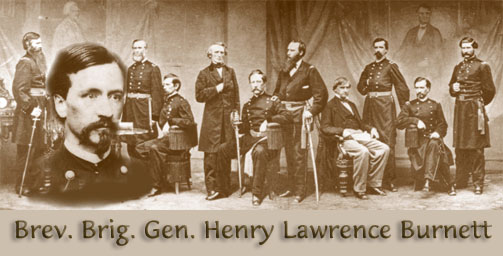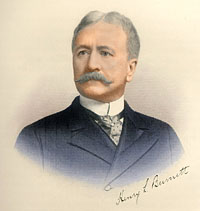 Henry L. Burnett [on left] then moved to New York, where at various times he was in partnership with E.W. Stoughton, with B.H. Bristow, William Peet, and W.S. Opdyke,
and with Judge James Emott.
He was for a time counsel for the Erie railroad, and was engaged in many noted cases, including the litigation over the Emma mine, in which he acted as attorney for the English bondholders.
Henry L. Burnett [on left] then moved to New York, where at various times he was in partnership with E.W. Stoughton, with B.H. Bristow, William Peet, and W.S. Opdyke,
and with Judge James Emott.
He was for a time counsel for the Erie railroad, and was engaged in many noted cases, including the litigation over the Emma mine, in which he acted as attorney for the English bondholders.
Probably his greatest case was that of the Rutland Railroad Company against John B. Page: in the closing argument
he spoke for sixteen hours (Great American Jury Speeches) with a "consummate ability" that stamped him "the peer of the greatest advocate of the age" (D. McAdam and others, Bench and Bar of New York, 1899, II, 64).
Divorce Case
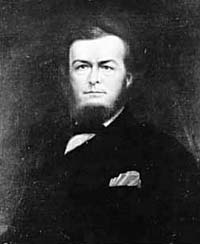
Thomas Welles Bartley (until 1869):
Judge Thomas Welles Bartley (1812 – 1885) [on right] was an Ohio legislator who, as Speaker of the Senate, filled out the eight remaining months of the
term of Ohio Governor Shannon when Shannon took a diplomatic post. During his time as Governor,
Bartley continued in the Senate.
From 1852-1859, Barley served on the Ohio State Supreme Court.
J.D. Cox and John F. Follett (until 1872):
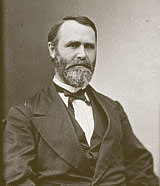 Jacob Dolson Cox (1828 – 1900) [on left] was an Ohio state
senator in 1860, forming an alliance with future president James Garfield. While still in the Ohio senate,
he studied military tactics while a Brigadier General of the Ohio Militia.
He entered the Civil War in the Department
of the Ohio, and was named a Major General under Burnside. He stayed in active military service, only
mustering out in January of 1866, after he was elected Governor of Ohio. Cox served under grant as Secretary
of the Interior until November 1870.
Jacob Dolson Cox (1828 – 1900) [on left] was an Ohio state
senator in 1860, forming an alliance with future president James Garfield. While still in the Ohio senate,
he studied military tactics while a Brigadier General of the Ohio Militia.
He entered the Civil War in the Department
of the Ohio, and was named a Major General under Burnside. He stayed in active military service, only
mustering out in January of 1866, after he was elected Governor of Ohio. Cox served under grant as Secretary
of the Interior until November 1870.
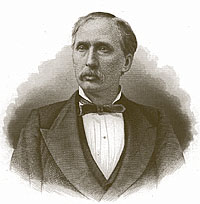
There was very little space between Cox's bouts of public service, and by 1872 he was running unsuccessfully
for U.S. Senate. In later years he was Dean of the Cincinnati Law School.
John Fassett Follett (1831 - 1902) [on right], a member of the Ohio Assembly from 1866-1868, was
Speaker in 1868. Following that term, he returned to Cincinnati to practice law. In 1883 he was elected for
a single term to the US House of Representatives from Ohio.
Edwin Wallace Stoughton (1872-1873):
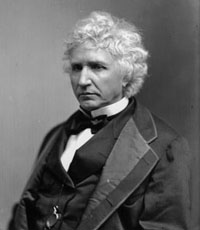 Edwin Wallace Stoughton (1818-1882) was admitted to the bar of New York in 1840. As a lawyer,
he was involved in several celebrated cases, including the Tweed case and the Emma mine case, a suit on which General Burnett was
also active. An author of multiple articles, Stoughton wrote on political law, including one supporting President Grant's
use of the army in New Orleans. When Rutherford B. Hayes' claim to the presidency was challenged, Stoughton was one of the counsels
supporting Hayes to the Electoral Commission. Hayes won the presidency, and he appointed Stoughton as Ambassador to Russia, but
Stoughton became ill in Russia, an illness which led eventually to his death, and resigned as Ambassador after only a year.
Edwin Wallace Stoughton (1818-1882) was admitted to the bar of New York in 1840. As a lawyer,
he was involved in several celebrated cases, including the Tweed case and the Emma mine case, a suit on which General Burnett was
also active. An author of multiple articles, Stoughton wrote on political law, including one supporting President Grant's
use of the army in New Orleans. When Rutherford B. Hayes' claim to the presidency was challenged, Stoughton was one of the counsels
supporting Hayes to the Electoral Commission. Hayes won the presidency, and he appointed Stoughton as Ambassador to Russia, but
Stoughton became ill in Russia, an illness which led eventually to his death, and resigned as Ambassador after only a year.
Popular Fallacies about Russia
The Third Term: Reasons for it
Erie Railway Company (1873-1874):
In 1873 he was appointed associate attorney and counsel of the Erie Railway Company.
He gave his entire time and services in this capacity throughout the administration of
President Peter H. Watson, but resigned his position in 1875, when the Hon. Hugh J. Jewett
succeeded Mr. Watson.
[Biographical Cyclopaedia and Portrait Gallery]
Benjamin Helm Bristow, William Peet, and William S. Opdyke (1874-1875):
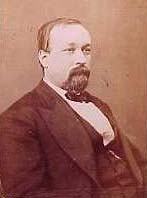 Benjamin Helm Bristow (1832-1896) [on left]
was in the Cavalry of Kentucky during the Civil War. During the summer of 1863, he assisted in the capture of
John Hunt Morgan, whom Burnett's 2nd Ohio Cavalry had also been after. After serving as a Kentucky
state senator from 1863 to 1865, he was appointed a US District Attorney and, finally, Secretary of the Treasury under President Grant.
He was active in prosecuting the 'Whiskey Rebellion', leading to tension with Grant that led Bristow to eventually resign as Secretary.
Benjamin Helm Bristow (1832-1896) [on left]
was in the Cavalry of Kentucky during the Civil War. During the summer of 1863, he assisted in the capture of
John Hunt Morgan, whom Burnett's 2nd Ohio Cavalry had also been after. After serving as a Kentucky
state senator from 1863 to 1865, he was appointed a US District Attorney and, finally, Secretary of the Treasury under President Grant.
He was active in prosecuting the 'Whiskey Rebellion', leading to tension with Grant that led Bristow to eventually resign as Secretary.
On 16 Oct 1878 he formed the
partnership of Bristow, Peet, Burnett, & Opdyke, and the following year he was elected the second president of the American Bar Association.
William Peet (1822-1895) took his undergraduate and law education at Yale, and was admitted to the New York bar in 1848.
He practiced law in New York
City from 1849 until his death in 1895, when he died suddenly of angina. He was joined by William S. Opdyke in 1866,
and by Benjamin H. Bristow in 1878.
William S. Opdyke
Books
Genealogy Book on Opdykes
Supreme Court Cases
Central Trust Co. v. Grant Locomotive Works, 135 U.S. 207 (1890)
Fourth Nat Bank Of City Of New York v. American Mills Co., 137 U.S. 234 (1890)
Louisville, E. & St. L. R. Co. v. Wilson, 138 U.S. 501 (1891)
New York State v. Barker, 179 U.S. 279 (1900)
Delaware & H CO. v. Albany & S R Co, 213 U.S. 435 (1909)
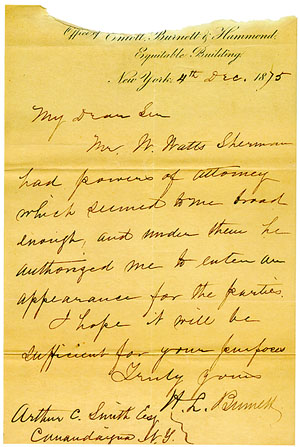 |
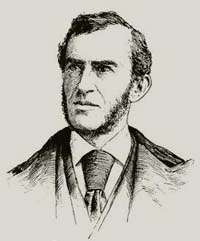
James Emott
|
James Emott and Henry B. Hammond (1875-1883):
James Emott (1823-1884) was the first mayor of Poughkeepsie
after its charter in 1854, then resigned to accept the office of justice of the New York Supreme Court for the second judicial district.
He removed to New York City in 1870, and active in the overthrow of the Tweed ring in 1870. From 1862 till his death he was president
of the Merchant's bank of Poughkeepsie.
Henry B. Hammond was
President of New York & Long Island Railroad Co., which
proposed to build a tunnel from Long Island City to Manhattan, and was
Director of the New York & Boston Air Line. He was active in pleading cases before the U.S. Supreme Court.
Supreme Court Cases
U S Fidelity & Guaranty Co. v. U S For Benefit Of Bartlett, 231 U.S. 237 (1913)
Fosdick v. Schall, 99 U.S. 235 (1878)
Edward Baldwin Whitney (1883-1893):
Edward Baldwin Whitney (1857-1911)
was educated at Yale and Columbia Law School, and was admitted to the bar of New York City in 1880.
In 1883, then managing clerk of Bristow, Peet & Opdyke, he and General Burnett left the firm to form Burnett & Whitney (67 Wall Street).
From 1893 to 1897, he was named Assistant District Attorney General of the United States by President Cleveland.
From 1909 to 1911, he was a New York Supreme Court Justice.


